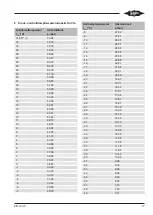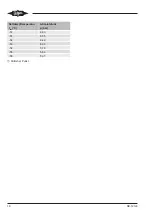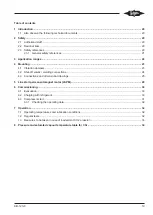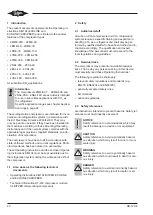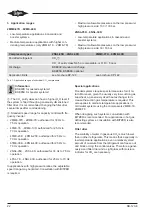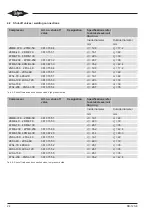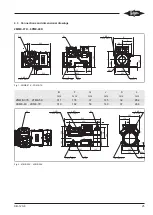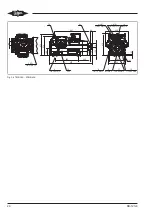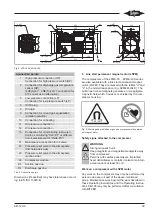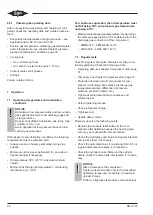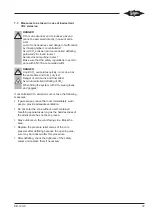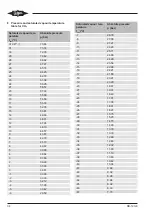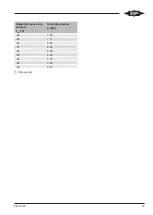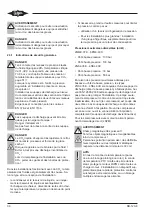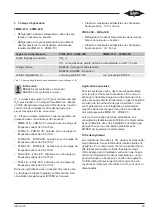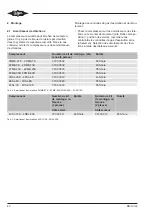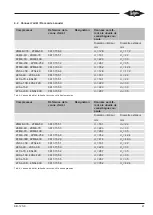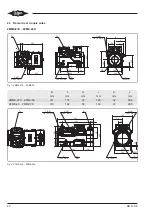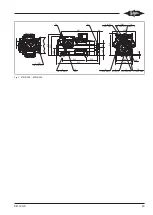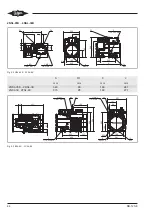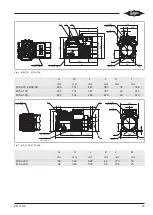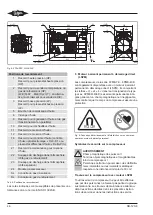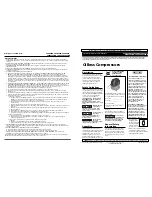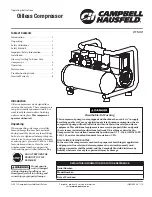
KB-120-8
31
Permitted refrigerant
CO
2
of purity grade N4.5 or comparable, or H
2
O
< 5 ppm.
The CO
2
purity grade can have a higher H
2
O concen-
tration if a generously dimensioned filter drier is used
and if the system is charged with refrigerant through
this filter drier. It is recommended changing the filter
drier several times after commissioning.
Due to the high requirements regarding residual mois-
ture, a filter drier is needed when charging with CO
2
of
purity grade N3.0!
Charging process
Do not switch on the compressor.
Switch the oil heater on.
Do not start the charging process until the following
oil temperature has been reached: min. t
oil
= t
amb
+
20K. Ideally at 35°C - 40°C.
▶ Use a pressure reducer and flexible charging
pipelines to connect the CO
2
refrigerant bottle to the
service connections of the system (suction and high
pressure side). Before tightening the screwed joints,
flush the pipelines with CO
2
vapour.
▶ Open the valves of the charging connections and
break the vacuum with CO
2
from the gas phase of
the charging cylinder until an excess pressure of ap-
proximately 10 bar is reached. If the temperature of
the refrigerant bottle is too low, it should be heated in
a water bath (water max. 40°C).
▶ Close suction and discharge gas shut-off valves of
the compressor. Continue charging the system (no
the compressor) with gaseous CO
2
up to approx.
20 bar.
▶ Afterwards pour liquid CO
2
into the receiver or the in-
let of the cascade heat exchanger.
!
!
NOTICE
If a pressure of approx. 20 bar is reached, stop
charging the suction side with refrigerant. Make
sure that the solenoid valves of the evaporator
are closed (de-energised).
6.3
Compressor start
!
!
NOTICE
Avoid strong pressure reduction in the crank-
case during the compressor start and during op-
eration!
Oil foam formation and therefore insufficient lub-
rication!
Energise the solenoid valve in the liquid line to the
cascade heat exchanger in the medium temperature
application (liquid injection on the evaporator side of
the heat exchanger results in CO
2
condensation).
Before starting the first compressor / evaporator:
Choose the evaporation capacity according to the
compressor performance.
▶ Open the discharge gas shut-off valve and the suc-
tion gas shut-off valve of the CO
2
compressor. In
large systems with high-capacity evaporators and
long pipes, proceed very carefully and keep the suc-
tion gas shut-off valve in throttling position.
▶ Switch the compressors on (initially only one com-
pressor for parallel connection). In large systems,
maintain the suction gas shut-off valve in throttling
position. As soon as the suction pressure decreases,
slowly start opening until it is completely open. At the
same time, switch on the solenoid valve(s) of the
evaporator if required and in accordance with the
compressor capacity.
▶ If there is not enough refrigerant: Adjust the refriger-
ant quantity as needed.
▶ Charge the suction side with gaseous CO
2
or the re-
ceiver with liquid CO
2
, avoid a strong increase in
pressure.
▶ If the application limits are exceeded or if abnormal
conditions occur (e.g. wet operation), switch the
compressors off immediately.
▶ Only switch on again when the pressure levels are
stable or after elimination of a possible fault.
▶ Avoid high cycling rates!
▶ Depending on the system design and control sys-
tem, connect further compressors and evaporators
and add refrigerant if necessary.

